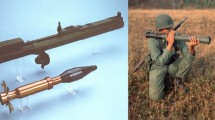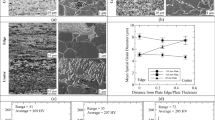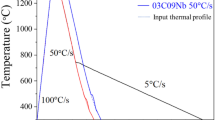Abstract
Shaped-charge liners (SCLs) are thin metallic cones which, when explosively driven to high strain rates and pressures, collapse and extrude a high speed jet. The liner material experiences strain rates of 104 to 107 s−1, and the tip of the extending jet travels at several kilometers per second. SCLs are used for penetration purposes by defense, mining, and oil drilling industries. To maximize penetration, jets must remain intact as long as possible; liner performance is subsequently quantified by the time to breakup (tb). A key factor in extending tb is the ductility of the jet. The ultimate ductility of a shaped charge jet is controlled by the characteristics, configuration, and design of both the high explosive drive and the liner material. Here, we endeavor to enhance SCL performance through an improved understanding of the relationship between liner properties and jet ductility which will facilitate production of engineered liner materials. This “materials by design” approach is predicated on knowing the materials' structure-property relations that influence jet ductility.
Similar content being viewed by others
References
M. L. Duffy and S. K. Golaski, U.S. Army Ballistic Research Laboratory Technical Report, No. BRL-TR-2800 (1987).
D. K. Chan, D. H. Lassila, W. E. King, and E. L. Baker, in Fracture-instability dynamics, scaling and brittle/ductile behavior, ed. by R. L. B. Blumberg Selinger, J. J. Mecholsky, A. E. Carlsson, and E. R. Fuller, Jr. (Mater. Res. Soc. Proc. 409, Pittsburgh, PA, 1996), p. 195.
D. H. Lassila, E. L. Baker, D. K. Chan, W. E. King, and A. J. Schwartz, Proc. 16th Int'l Ballistics Symposium, 1996, p. 31.
K. Winer, L. Shaw, S. Muelder, D. Breithaupt, and D. Baum, Propell. Explos. Pyrot. 18, 345 (1993).
V. R. Dave, M. J. Cola, M. Kumar, A. J. Schwartz, and G. N. A. Hussen, Weld. J. 83, 18 (2004).
A. J. Schwartz, M. Kumar, and D. H. Lassila, accepted for publication in Metall. Trans. A (2004).
D. P. Field and B. L. Adams, Acta Metall. Mater. 40, 1145 (1992).
J. Don and S. Majumdar, Acta Metall. 34, 961 (1986).
T. Watanabe and S. Tsurekawa, Acta Mater. 47, 4171 (1999).
G. Palumbo, United States Patent 5702543 (1997).
G. Palumbo, United States Patent 5817193 (1998).
A. J. Schwartz, M. Kumar, and W. E. King, in Interfacial engineering for optimized properties II, ed. by C.B. Carter, E.L. Hall, S.R. Nutt, and C.L. Briant (Mater. Res. Soc. Proc., 586, Pittsburgh, PA, 2000) pp. 3–14.
M. Kumar, A. J. Schwartz, and W. E. King, Acta Mater. 50, 2599 (2002).
K. Washizu, Variational methods in elasticity and plasticity (Pergamon, New York, 1968).
ASTM Standards E 112 and E 1181.
M. Kumar, K.J.M. Blobaum, J.S. Stölken, unpublished research.
Author information
Authors and Affiliations
Rights and permissions
About this article
Cite this article
Blobaum, K.J., Stölken, J.S. & Kumar, M. Grain Boundary Engineering of Copper Shaped-Charge Liners. MRS Online Proceedings Library 819, 327 (2004). https://doi.org/10.1557/PROC-819-N3.27
Published:
DOI: https://doi.org/10.1557/PROC-819-N3.27




